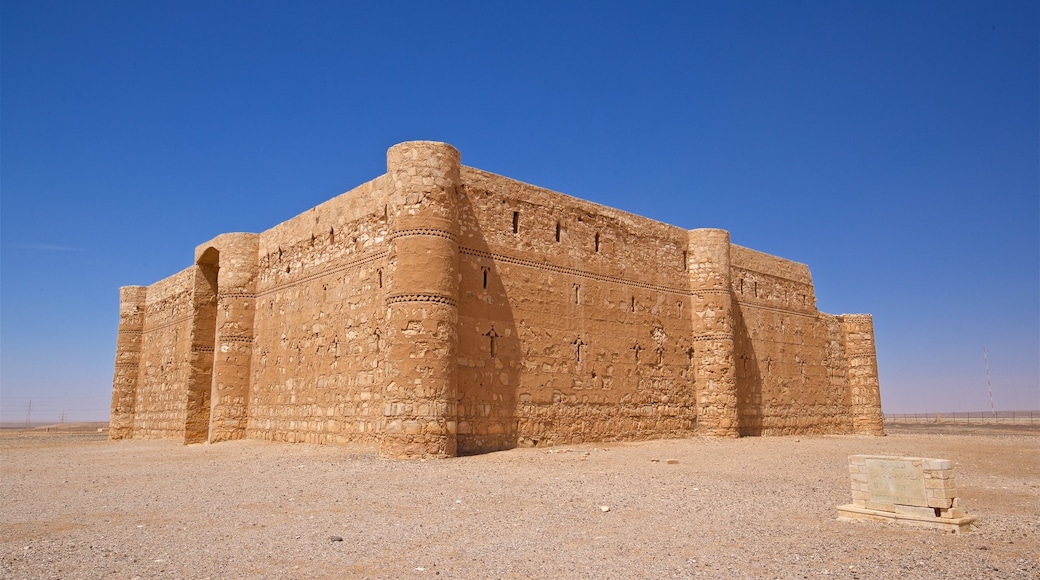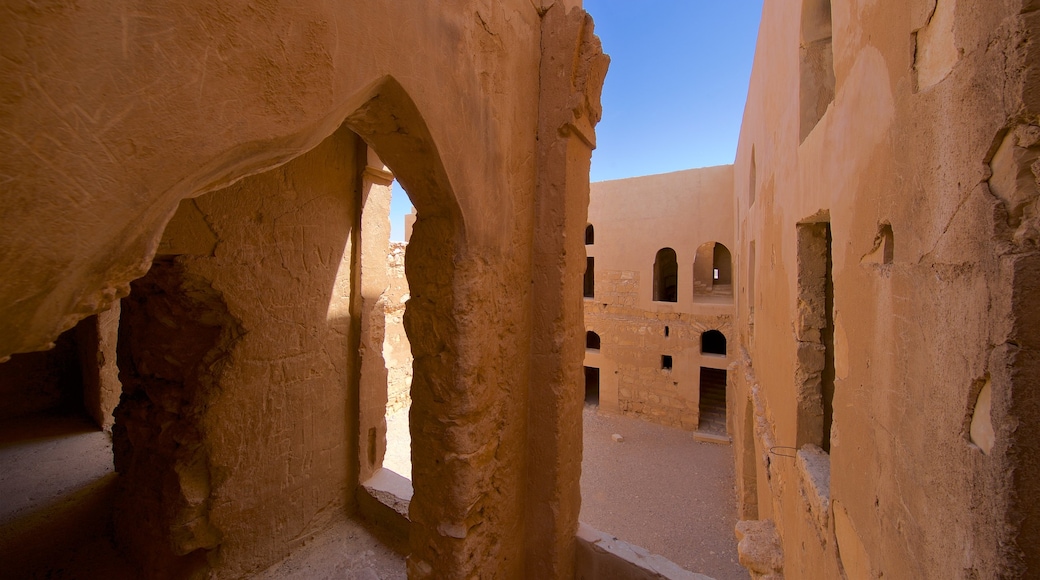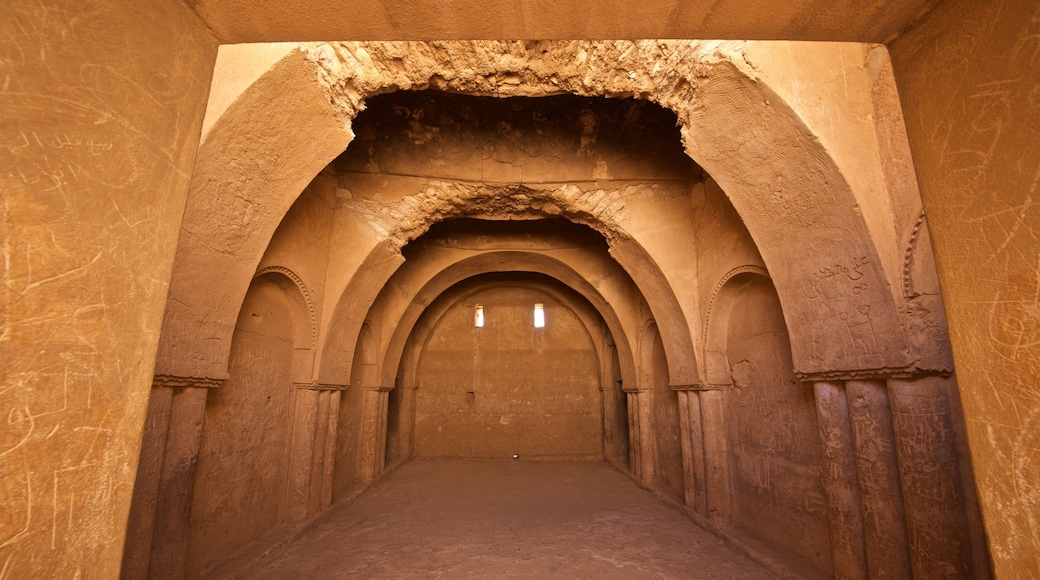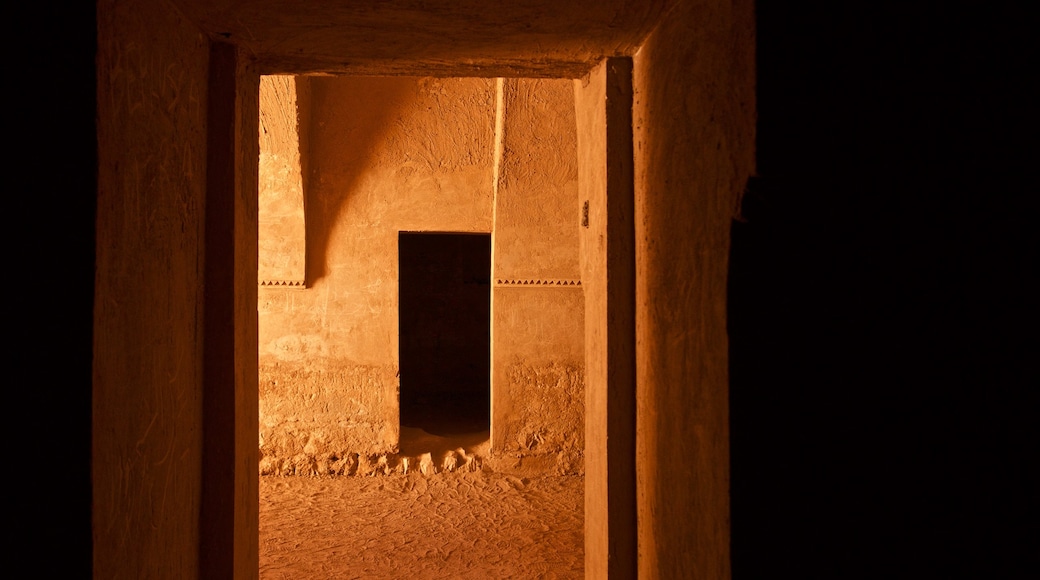Visit the remote Qasr Kharana to see a restored and well-preserved example of early Islamic architecture. Walk amid its network of rooms and enjoy views of the sprawling Jordanian desert. An inscription suggests that Qasr Kharana dates to A.D. 710 and the reign of the Umayyad caliph Al-Walid I.
The purpose of this historical landmark is the subject of debate. One opinion is that it was a military base, although the arrow slits are deemed too high and narrow to give archers adequate visibility. Another idea is that it was a roadside inn for camel trains traveling on trade routes however, there is a lack of a nearby water source. The most likely theory is that it functioned as a meeting place for tribal leaders and government officials from Damascus.
Featuring solid 115-feet (35-meter) long walls, this square-shaped monument commands an imposing image against its desert backdrop. Note the rows of cosmetic arrow slits, which most likely served to allow light and ventilation to enter the building. The only entrance is on the south side. Look for an acanthus relief and Greek inscription, which indicate that a Byzantine house may have stood here previously.
An arched passageway flanked by stables leads from the entrance to the courtyard. From here you can access a collection of barrel-vaulted chambers consisting of a central hall and two side rooms. This layout was popular in Umayyad architecture and is prevalent in the Desert Castles. Stucco work and stylized plant designs decorate rooms on the upper floor. It’s possible to climb onto the roof and gaze over a desert that stretches for miles in all directions.
Qasr Kharana is a 1-hour drive from Amman and a 30-minute drive from Azraq. Get here via rented car or join a guided tour from Amman. There’s an admission fee and the ticket is also valid for Qasr al-Azraq and Quseir Amra. Get access to this and over 40 attractions by purchasing the Jordan Pass.






